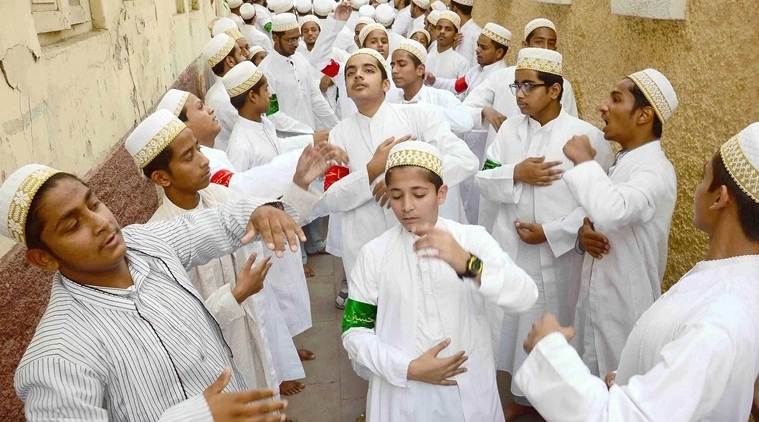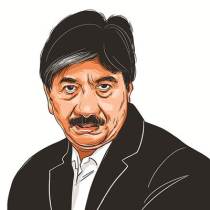In Good Faith: The Hindus with Hussain
Hussaini Brahmins, various Hindu figures mark Muharram

The Hussaini Brahmins believe that their ancestor Rahib Dutt, along with his sons, fought alongside the righteous Imam Hussain at Karbala. (Photo for representation purpose)
Many may know that it is common amongst several Hindu communities across India to observe Muharram as a gesture of brotherhood. A lesser known fact is that there is a group of Brahmins — the Mohyal Brahmins — who prefer to call themselves the Hussaini Brahmins.
This seemingly inter-religious nomenclature is not an indication of a lack in Brahmanical sentiment but it is very true that they not only participate in the Muharram processions and mourning, but also abstain from social celebrations like marriages during the month of Muharram. The sect is also not as remote as one might imagine. It boasts of a number of well known names amongst its followers. Film star Sunil Dutt and Urdu writers such as Kashmiri Lal Zakir, Sabir Dutt and Nand Kishore Vikram are some of the better known Hussaini Brahmins. Before Partition, Hussaini Brahmins were mostly residents of the Sindh and Lahore regions. Afterwards, they were forced to settle in places like Pune, Delhi, Allahabad and Pushkar.
The Hussaini Brahmins believe that their ancestor Rahib Dutt, along with his sons, fought alongside the righteous Imam Hussain at Karbala. While historians have been able to confirm some facts about Rahib Dutt, there is also no dearth of legends around him. Some claim that he was a courtier in the service of Chandragupt, who was the king of Lahore at the time. A number of researchers have suggested that there were two Brahmins (one of them probably Rahib Dutt) in Iraq during the war of Karbala. They were there as cloth merchants and according to legend, when they came to know about the war, they considered it a battle between good and evil like all primordial battles. Rahib Dutt was certain that this battle was, in essence, no different from the battle of the Ramayana or Mahabharata and sent his seven sons to fight for Hussain. The battle between Hussain and Yazid was thought to be one sided. Despite knowing this, Rahib Dutt and his sons joined forces Hussain. Rahib Dutt survived the battle but his sons did not.
After the battle, Rahib met a family member of Hussain who honoured him with the title, Hussaini Brahmin. It is a common belief that all Hussaini Brahmins have a scar on their necks. This they believe is a symbol of the martyrdom of Imam Hussain and the Brahmin brothers, whose throats were slit.
Even apart from the Hussaini Brahmins, there are many examples in history of Hindus who would observe Muharram, composed marsiyas (elegies lamenting the martyrdom of Hussain) and constructed imambaras in Lucknow. The most famous Hindu poet to have composed marsiyas was Chunnu Lal Dilgeer (1778-1846). It is believed that he composed about 70,000 couplets in praise of Hussain and about the war at Karbala. Dilgeer’s couplets are thought to be historically accurate rather than being works of fiction. Some of his more famous couplets celebrate his love for and faith in the greatness of Imam Hussain:
Ghair Az Gham-e-Hussain/Mujhey aur gham na ho (I pray that the grief for Hussain is not reduced/that God would give me no pain except the pain of Hussain)
Bakhsh deejye hashr mein yaarab meri taqseer bhi/Paye naam-e-Tazya daran ho ye Dilgeer bhi (O god forgive me on the day of judgment/because I was also one of the mourners of Hussain).
Many critics believe that Dilgeer’s poetry has played a great role in the evolution of Urdu marsiyas. At the time when Dilgeer was writing, the interaction between Hindus and Muslims was very common but not between men and women. Dilgeer includes many female rituals and idioms practised by Muslim women, which even the Muslim poets of Lucknow could not because interactions with women were socially prohibited.
Besides Chunnu lal Dilgeer, prominent Hindu poets as well as civilians at many places have been known to mourn during Muharram. Mewa Ram, a Diwan of Ghaziuddin Haider of Oudh, was a great follower of Imam Hussain. He too constructed an imambara and arranged Taziadari at his residence. Rai Shatab Singh Bedar is another poet of the period who has left a body of romantic verses along with a number of marsiyas.
In the current times, when all one hears of is communal mistrust and misconduct, it is well worth our time, and sanity, to look back at these traditions of mutual cultural respect.
The writer teaches Urdu literature at Zakir Hussain College, Delhi University






































No hay comentarios:
Publicar un comentario